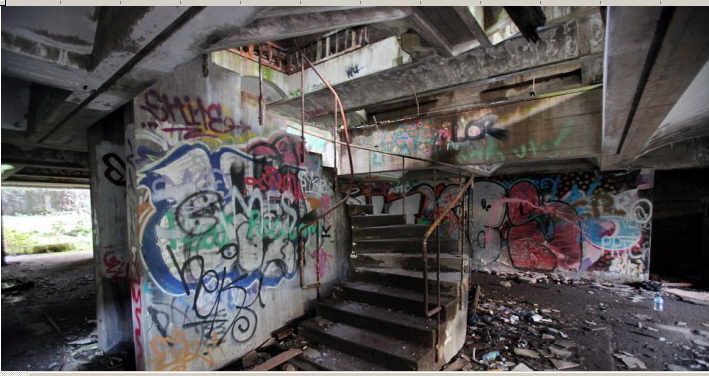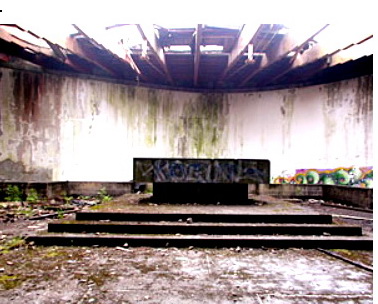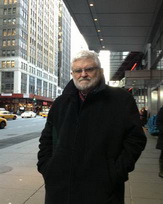I
recently came across a place I didn’t know existed. A news article I found on
the net told the story of St Peter’s seminary near
Glasgow
, opened in the mid-sixties, closed and left empty by the
mid-eighties. Since then, vandalised and ruined by the intrusion of the graffiti
artists where weathered concrete walls and brick facings are coloured with names
and symbols of graffiti artists, their jumble of images amid the reclaim of
natural growth around it. Now there is a movement to restore what is being
hailed as a significant piece of architecture of its period. Let’s set that
question to one side and ask instead some questions about the changing patterns
of seminary life.

In
the years that have followed the second council of the
Vatican
many aspects of our life have changed. And we might add,
they needed to change in a radical manner.
Seminaries, where men were taken apart from society and lived an almost
monastic existence for six years, had many failings, not the least being a
restriction of emotional growth giving rise, for some,
to a stunted maturity. After such a closed and controlled environment,
our newly ordained priests were assigned to parishes and thrown into the
hurly-burly of contemporary life. That so many survived is to their credit and
fortitude, that others didn’t should not be a surprise.
So how have things changed? First and foremost, there are now nowhere near
the number of men attending seminary. That number has been falling over the
years and continues to do so. In many journals, magazines and news articles, in
discussions and letters, the crisis in vocations has been continually raised, to
be met with a stony silence from many of our bishops. Their solution of
amalgamation of parishes is a short term sticking plaster over an ever widening
wound. The option of accepting a married clergy is only recently gaining
credibility, tentative though it is.
Brazil
is the first Conference of bishops to formally set up a
commission to examine the option; if only others would have similar courage.
Certainly, seminary life is a lot more open than it was and the curriculum
followed during the time spent there reflects to a degree a growing realisation
of the world we live in. The inclusion of programmes for developing and
understanding human relations in an open and honest manner it to be welcomed for
it is long overdue.
So too is the examination of suitability of those offering themselves for
seminary formation. Our appreciation of individuals through psychological
assessment has come a long way in recent years.
Our attempts in the
management of formation, both in their success and in their failure, have
brought us to a point where we can no longer just accept things as they are. We
must search for new ways of fostering vocation.
During one of the last retreats, given to Superiors of Women Religious in
May 1968, Merton asked them to consider a number of questions, the first of
which was “What would you be doing now if you weren’t a religious?”
Indeed a searching question that does challenge the respondent to examine
motives and to be honest in giving an answer. Maybe there is the kernel of our
discussion of the Church in our time, alternative ways, alternative paths…
I have often mentioned the life and writings of
Thomas Merton in these postings and I do so again this week remembering that
January 31st is the 100th anniversary of his birth in the
village
of
Prades
, in
France
. He was a man who spent his life asking questions, never
afraid to challenge the status quo, always seeking a way forward in a turbulent
world. The Cure d’Ars has been held up as the model for priesthood since his
heroic life in the 19th C. I might suggest that in Tom Merton we have
an example of a 20TH C. man willing to face up to difficulties, a man
of our time, a realist if ever there was one.
A
number of still images of St Peter’s Seminary and a video walkabout can be
found at this
link
END
------


